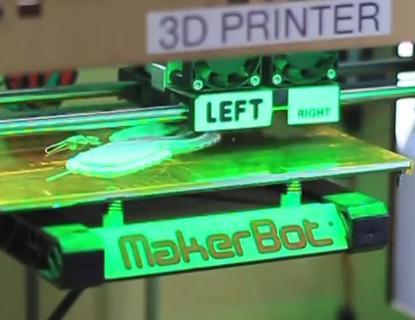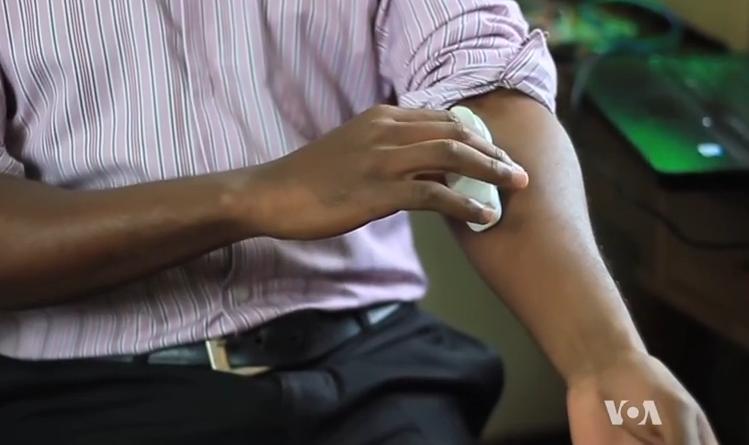As 3D printing and scanning technologies continue to drop in price, their availability to individuals and organizations within developing nations continue to expand. Not only does this allow  access to printers in these less fortunate areas of the world, but it also allows for cheap access to whatever these printers can fabricate.
access to printers in these less fortunate areas of the world, but it also allows for cheap access to whatever these printers can fabricate.
One of the major problems within developing countries is their lack of health care, as well as access to life saving, or life altering technologies and devices; technologies and devices which many of us in the United States or Europe may not even realize are incredibly important, simply because of the fact that they’re so common. In addition, devices which may not be needed here because of our diverse network of medical facilities/professionals, and our stockpiles of medical supplies, are in fact needed in developing nations. For example, last month we covered a story about a syringe which was 3D printed, allowing for vaccinations in areas of the world where electricity is not readily available. The 3D printed syringe mixed the ingredients of the vaccine as it was being injected into a patient, foregoing the need for refrigeration. Such a device will be able to utilize the capabilities of 3D printing, to possibly save thousands of lives over the coming years.
This isn’t all though. A 20-year-old man named Alois Mbutura, who is a first-year electrical engineering student at the University of Nairobi in Kenya, has used a MakerBot 3D printer to create an affordable medical device, capable of mass production at extremely low prices. The device enables doctors to easily find veins and then administer important intravenous needles to infants, which can often be a very difficult task.
“The vein finder was actually a solution that the School of Health and School of Engineering partnered to reduce the inability of health care people to find veins in babies and also for it to be economical and suited to Kenya,” stated Mbutura.
Mbutura was able to create the tiny device, which is still a prototype, on a 3D printer. What’s even more incredible is that within a day he can print out around 100 of these vein finding devices on just a single 3D printer, meaning affordable mass production is possible in an area where resources are not always available. This was all made possible via a ‘FabLab’ located within the University of Nairobi, one of two FabLabs located in the African country of Kenya, and one of 400 in the world. Originally launched back in 2009, the Nairobi FabLab has evolved from its early beginning, as new technologies such as 3D Printing has caught on.
Kenya ranks 149th in the world for infant mortality rates, putting it alongside other African nations, near the bottom of a list of 188 countries ranked by the United Nations. Such a device, readily available and affordably produced, could be a game changer for the continent of Africa, as well as other developing nations around the globe.
As 3D printers become available throughout the world, and the number of applications for these machines increase as the prices decrease, we will likely see a globalization in manufacturing and technology like we have never come close to before. Let’s hear your opinion on Mbutura’s device, as well as your general thoughts on this globalization of technology, in the 3D printed vein finder forum thread on 3DPB.com. Check out the video below where Mbutura discusses his work.
Subscribe to Our Email Newsletter
Stay up-to-date on all the latest news from the 3D printing industry and receive information and offers from third party vendors.
You May Also Like
Profiling a Construction 3D Printing Pioneer: US Army Corps of Engineers’ Megan Kreiger
The world of construction 3D printing is still so new that the true experts can probably be counted on two hands. Among them is Megan Kreiger, Portfolio Manager of Additive...
US Army Corps of Engineers Taps Lincoln Electric & Eaton for Largest 3D Printed US Civil Works Part
The Soo Locks sit on the US-Canadian border, enabling maritime travel between Lake Superior and Lake Huron, from which ships can reach the rest of the Great Lakes. Crafts carrying...
Construction 3D Printing CEO Reflects on Being Female in Construction
Natalie Wadley, CEO of ChangeMaker3D, could hear the words of her daughter sitting next to her resounding in her head. “Mum, MUM, you’ve won!” Wadley had just won the prestigious...
1Print to Commercialize 3D Printed Coastal Resilience Solutions
1Print, a company that specializes in deploying additive construction (AC) for infrastructure projects, has entered an agreement with the University of Miami (UM) to accelerate commercialization of the SEAHIVE shoreline...






























